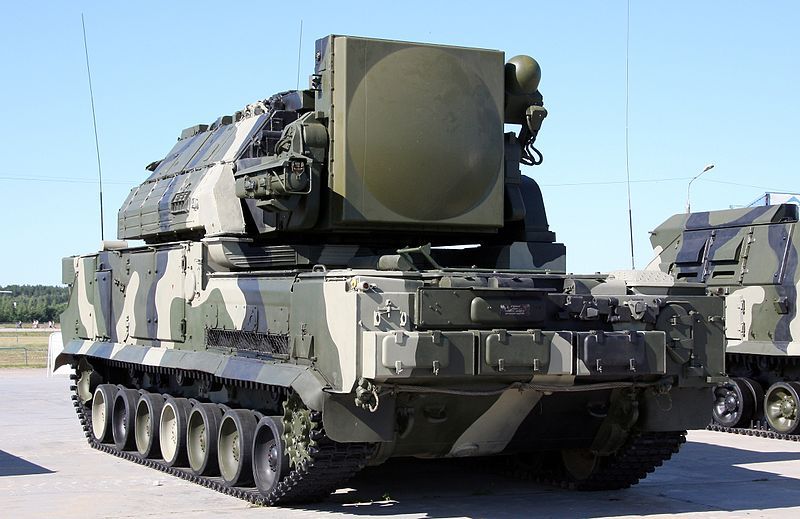Potential Consequences of Iran’s Downing of a Ukrainian Airliner

How was Flight PS752 destroyed?
Shortly after the crash, video recordings made by people nearby suggested that PS752 had been shot down by a surface-to-air missile. According to the latest declarations by the Iranian government, the attack was unintentional and the fault of the crew of a Tor-1M/SA-15 missile unit, which had mistakenly recognised the aircraft as an incoming U.S. cruise missile. Many factors led to the shootdown, including not stopping civilian air traffic, the terrain and location of radar around Tehran, the lack of information-sharing between civil and military authorities, and others. However, the increased threat expectation was key, as the Iranians were bracing for a retaliatory U.S. air and/or missile attack. This suggests a generally low-level of preparedness of Iran’s air defences in contrast with the rather precise—and presumably intentionally harmless—Iranian missile attack on the U.S. bases in Iraq.
What was the international response to the crash?
Ukrainian government experts were quickly on-site and, after an initial inspection of the wreckage, found traces on cockpit pieces confirming an explosion of a Tor missile warhead. This evidence, together with source data from U.S. intelligence (radar records, radio and electronic intelligence, telemetric and infrared traces), persuaded Canada to demand an international investigation and full cooperation from Iran. The collected evidence and the positions of Ukraine and Canada (63 citizens of the latter country were killed) also contributed to the positions taken by other NATO and EU states, which altogether resulted in pressuring Iran’s admission of responsibility for shooting down Flight PS752.
Why did the Iranian government’s position on the crash change?
Immediately after the plane crashed, the Iranian authorities denied a military connection (specifically that an Revolutionary Guard unit had been involved) and tried to cover up the incident by hiding remains of Flight PS752. However, the change in their position was influenced by international pressure, the expected damage from continuing to cover it up, and their isolation on the international arena, as well as the probability that Ali Khamenei, Iran’s Supreme Leader, is the strategic decision-maker. His demand for a full explanation of the tragedy from the Revolutionary Guard accelerated clear statements made by the president and foreign minister of Iran regarding military responsibility for downing the airliner. It is possible that some Iranian officials mistakenly assumed that the recent three-day funeral of for Gen. Soleimani meant there was a strong, at least short-term consolidation of Iranian society around them.
How is the incident affecting Iran’s international image and domestic legitimacy?
Among the consequences of Iran accepting responsibility for downing Flight PS752 will probably be compensation to the families of the victims and UIA. Another, immediate effect of the shootdown is the suspension of some air connections with Iran and ban on using air corridors over the country. This incident weakens the internal legitimacy of Iran’s theocratic rulers, not least because many on board had dual citizenship and family ties to Iran, as evidenced by the wave of protests at universities in major cities. The protesters are specifically demanding the resignations of Guard commanders, and some even calling for Khamenei to quit, stability of the administration and internal situation of Iran. This pressure could mean the Iranian regime focuses on quickly calming public sentiments by punishing some civilian and military officials to reduce the scale and duration of the protests. This will be especially difficult because Iranian society seems to be very divided in their attitude to the government.
How does the incident complicate Iran’s regional position?
The tragedy of Flight PS752 is now interconnected with the U.S.-Iran tensions that have been growing since spring 2019 and further complicates Iran’s regional situation. Although the killing of Gen. Soleimani may have had an impact on the increased likelihood of retaliation by the Revolutionary Guard or a group supported by them, possible changes in their command could result in more cautious Iranian actions in the region. In particular, a short-term focus on maintaining the internal stability of Iran in the face of the protests should reduce some tensions in the region and favour EU—or even U.S.—diplomatic initiatives. Apart from Iran’s need to fully explain the shootdown, it seems inevitable that the nuclear issue will return, so the EU’s goal should be to avoid a scenario in which Iran undertakes steps to build-up its nuclear arsenal.


